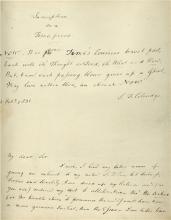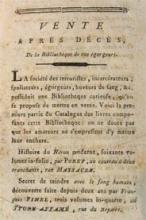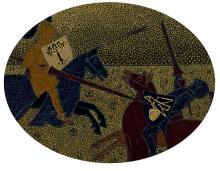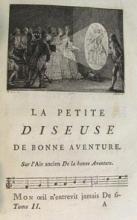King John's 1205 Charter
Submitted by Carolyn Vega on Thu, 10/13/2011 - 2:41pmKing John, oh King John. Best remembered for signing the Magna Carta (after being forced by his barons to do so), losing most of England's territory on the continent (in a war triggered partially by his marriage to Isabelle of Angoulâme), and trying to seize the crown from his elder brother Richard the Lionheart (while Richard was being held captive by Duke Leopold of Austria), John's life and sixteen-year reign was violent and unpopular. The 13th-century chronicler Matthew Paris went so far as to declare "Hell is too good for a horrible person like him," although this general view has been somewhat tempered in the intervening 800 years.










